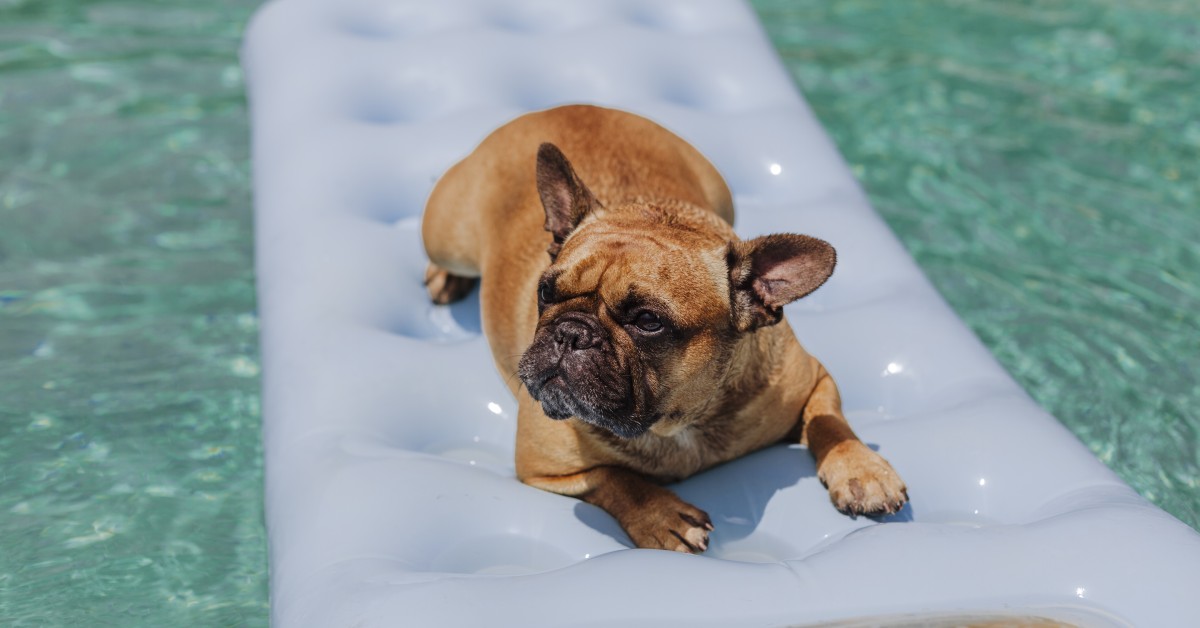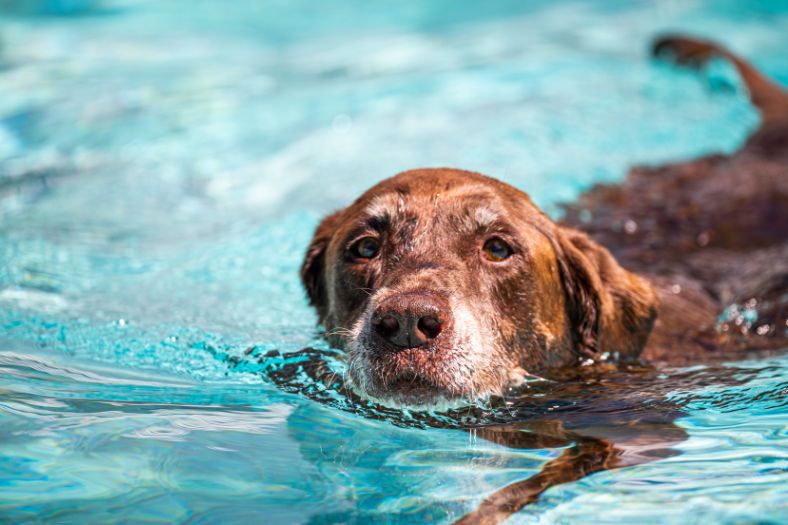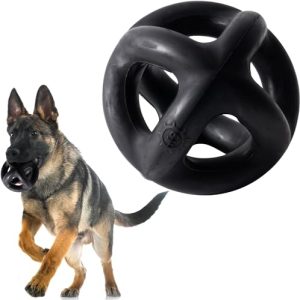Have you ever wondered if your dog knows how to swim? Maybe you’re planning a trip to the beach or a day by the lake, and you want to keep your furry friend safe.
Understanding whether dogs naturally know how to swim can give you peace of mind and help you prepare for water adventures together. Keep reading, because what you learn here could change the way you approach your dog’s time near water—and it might even save their life.
Can Dogs Naturally Swim
Many dog owners wonder if their furry friends are born knowing how to swim or if it’s a skill they need to learn. Understanding whether dogs can naturally swim helps you keep them safe around water and enjoy fun activities together. Let’s break down what nature has equipped dogs with when it comes to swimming.
Innate Swimming Ability
Most dogs have a natural instinct to paddle when placed in water. This reflex helps them stay afloat and move their legs in a swimming motion without formal training. However, not all dogs are equally confident or efficient swimmers right away.
Some dogs may panic or freeze when first introduced to water, showing that instinct alone isn’t enough. Have you ever seen a dog hesitate at the edge of a pool? That’s a clear sign that natural ability varies widely.
Breed Differences
Certain breeds are known for their swimming skills due to physical traits. Breeds like Labrador Retrievers, Newfoundlands, and Portuguese Water Dogs have webbed feet and muscular builds that make swimming easier.
On the other hand, breeds with short legs or heavy bodies, such as Bulldogs or Dachshunds, often struggle in the water. Their anatomy makes it harder to stay afloat and swim efficiently. Consider your dog’s breed before expecting them to be natural swimmers.
Puppies And Swimming
Puppies can show early signs of swimming instinct, but their skills need time and gentle guidance to develop. It’s important to introduce them to water slowly to build confidence without fear.
Never force a puppy into deep water; instead, let them explore shallow areas while you stay close. Early positive experiences can help your puppy learn to enjoy water safely as they grow.

Credit: www.reddit.com
How Dogs Learn To Swim
Teaching your dog to swim can be a rewarding experience, but it requires patience and understanding. Dogs don’t automatically know how to swim; they learn through exposure, guidance, and encouragement. How you introduce your dog to water and support their first attempts can shape their confidence and skills in the water.
Introduction To Water
Start by letting your dog get comfortable around water without pressure to swim. Let them explore shallow areas where their paws can touch the bottom. You might notice some dogs hesitate or bark at the water—this is normal.
Try playing near the edge with toys or treats to create positive associations. Watch for signs of stress, and never force your dog into deep water. Gradual exposure helps build trust and curiosity.
Training Techniques
- Use a dog life jacket:It provides buoyancy and safety, helping your dog stay afloat while they learn.
- Support their body:Hold your dog under the belly as they paddle to give them confidence.
- Encourage paddling:Stand in the water and call your dog towards you, rewarding each small swim.
- Keep sessions short:Ten to fifteen minutes is enough to avoid tiring your dog too much.
Each dog learns at its own pace, so stay patient. Celebrate small victories to keep your dog motivated. You might be surprised how quickly some dogs catch on!
Safety Tips For Beginners
Always supervise your dog closely near water, even if they seem like natural swimmers. Sudden fatigue or panic can happen unexpectedly.
- Choose calm, clean water spots free from strong currents.
- Check the water temperature; cold water can be dangerous.
- Have fresh water available so your dog doesn’t drink from the lake or pool.
- Rinse off chlorine or saltwater to protect your dog’s skin and coat.
Have you noticed your dog’s reaction when near water? Their comfort level can guide your approach. Remember, safety and positive experiences build a lifelong love for swimming.
Common Swimming Styles In Dogs
Dogs have natural swimming abilities, but not all swim the same way. Understanding their common swimming styles helps you recognize how your dog moves in water and what to watch for when introducing them to swimming.
Dog Paddle Explained
The dog paddle is the most common swimming style seen in dogs. It involves a simple, rhythmic movement where the dog kicks its legs alternately to stay afloat and move forward.
Think about your own dog when you toss a ball into a pool—most start paddling instinctively without any formal training. This style is effective and energy-efficient, making it perfect for beginners and casual swimmers.
Have you noticed how some dogs keep their heads above water effortlessly while paddling? This natural technique helps them breathe easily and maintain balance.
Variations Among Breeds
Not all dogs swim alike. Breed differences greatly influence swimming styles and abilities. For example, Retrievers tend to have strong, powerful strokes, while Bulldogs may struggle due to their body shape.
Some breeds like Dachshunds have short legs, which makes their paddling slower and more tiring. On the other hand, breeds with webbed feet, such as Newfoundlands, are excellent swimmers who glide smoothly.
Have you ever wondered why your dog prefers shallow water or avoids swimming altogether? Their breed’s body type and natural swimming style might explain their comfort level in water.
Benefits Of Swimming For Dogs
Swimming offers a range of benefits for dogs beyond just being a fun activity. It supports their overall health, sharpens their mind, and can even aid in healing injuries. You might be surprised at how much swimming can improve your dog’s quality of life.
Physical Exercise
Swimming gives your dog a full-body workout without stressing their joints. It helps build muscle strength and improves cardiovascular health. If your dog loves to run but struggles with arthritis or hip issues, swimming is a gentle alternative that keeps them active.
Have you noticed how your dog gets tired after a swim? That’s because swimming uses different muscles than walking or running, making it an excellent form of exercise.
Mental Stimulation
Swimming challenges your dog’s brain as much as their body. Navigating water, controlling movements, and learning new skills keep their mind sharp. This mental workout can reduce boredom and prevent destructive behavior at home.
Think about the last time your dog tried something new and succeeded—didn’t you see a spark of joy and confidence? Swimming can create those moments regularly, boosting your dog’s happiness.
Rehabilitation And Therapy
Many vets recommend swimming for dogs recovering from surgery or injury. The buoyancy of water supports their weight, easing pain and allowing gentle movement. This helps speed up recovery while minimizing the risk of further damage.
If your dog has hip dysplasia or joint problems, swimming can be part of a rehab plan that improves mobility. Have you considered asking your vet about hydrotherapy options for your dog?
Risks And Precautions
Swimming can be fun for dogs, but it comes with risks. Knowing these dangers helps keep your dog safe. Taking precautions protects your dog’s health and happiness in the water.
Drowning Hazards
Not all dogs are natural swimmers. Some can tire quickly or panic in deep water. Currents, waves, and slippery edges add danger. Pools without fences or covers can lead to accidents. Always watch your dog closely near water.
Water Temperature Concerns
Cold water can cause hypothermia in dogs. They lose body heat faster than humans. Warm water helps, but overheating is also a risk. Check the water temperature before letting your dog swim. Avoid extreme temperatures to keep your dog comfortable.
Recognizing Fatigue
Swimming uses a lot of energy. Dogs can tire without showing signs right away. Watch for heavy panting, slower strokes, or struggling to stay afloat. Take breaks often and let your dog rest on dry land. Prevent exhaustion to avoid dangerous situations.

Credit: www.diamondpet.com
Tools To Help Dogs Swim
Dogs often take to water with natural ease, but some need extra help. Tools designed to assist dogs in swimming can boost their confidence and safety. These aids make water time fun and less stressful for dogs and owners alike.
Life Jackets
Life jackets keep dogs afloat and safe in water. They are especially useful for weak swimmers or older dogs. Most jackets have handles to lift dogs easily out of water. Bright colors improve visibility during swimming sessions.
Floating Toys
Floating toys encourage dogs to swim and play in water. They grab attention and make swimming a game. Toys come in various shapes and sizes suited for water play. Using toys helps build a dog’s swimming interest and stamina.
Pool Ramps And Steps
Pool ramps and steps provide easy water access for dogs. They help dogs enter and exit pools safely without jumping. Ramps are gentle on joints, ideal for puppies and seniors. Steps offer a secure way to climb out of water.
When Dogs Should Avoid Swimming
Knowing when your dog should avoid swimming is just as important as encouraging them to enjoy the water safely. Swimming can be a fantastic exercise and fun activity, but certain conditions make it risky for your furry friend. Paying attention to these signs can protect your dog from harm and keep their swimming experiences positive.
Health Issues
Dogs with certain health problems should stay out of the water. Heart or respiratory conditions can make swimming dangerous because it requires strong stamina and breathing control. If your dog has skin infections or open wounds, water exposure can worsen the problem or cause new infections.
Also, dogs with ear infections or sensitive ears may experience pain or worsening symptoms after swimming. Always check with your vet if your dog has health concerns before letting them swim.
Age Considerations
Puppies and senior dogs often need special care when it comes to swimming. Very young puppies may not have developed enough strength or coordination to swim safely. They also have less body fat, which means they can get cold quickly in the water.
Older dogs might struggle with arthritis or joint pain, making swimming uncomfortable or risky. If your senior dog shows stiffness or weakness, swimming might do more harm than good. You might want to explore gentle water exercises designed specifically for senior dogs instead.
Environmental Dangers
Not every body of water is safe for your dog to swim in. Strong currents, waves, or sudden drop-offs can easily overwhelm even experienced swimmers. Algae blooms and polluted water pose serious health risks, including poisoning and infections.
Watch out for hazards like sharp rocks, fishing hooks, and debris that could injure your dog underwater. Always check the water quality and surroundings before letting your dog jump in. Would you want to swim in a place that feels unsafe? Your dog deserves the same consideration.

Credit: www.petassure.com
Frequently Asked Questions
Can All Dog Breeds Naturally Swim?
Not all dog breeds are natural swimmers. Some breeds, like retrievers, swim instinctively. Others may struggle due to body structure or temperament.
How Do Dogs Learn To Swim?
Dogs often learn to swim by instinct, but training helps. Gentle introduction and positive reinforcement build confidence in water safely.
Are Swimming Skills Important For Dogs’ Health?
Yes, swimming improves dogs’ fitness, joint health, and mental stimulation. It’s a low-impact exercise ideal for many dogs, including seniors.
What Safety Measures Should Owners Take For Swimming Dogs?
Always supervise dogs near water. Use dog life jackets for beginners or weak swimmers. Ensure safe entry and exit points to prevent accidents.
Conclusion
Dogs often know how to swim by instinct. Some breeds swim better than others. Not all dogs feel safe in water at first. Teaching your dog to swim can be fun and safe. Always watch your dog closely near water.
Use a life vest for extra protection. Swimming helps dogs stay healthy and happy. With patience, most dogs learn to enjoy water. Remember, every dog is different in swimming skills. Keep water time positive and stress-free for your pet.

Emily Barker is the founder of ChillDogLife.com, a space dedicated to helping pup parents discover the best dog products, lifestyle tips, and cozy ideas for happier homes.
A lifelong dog lover, Emily combines her passion for pets with a knack for research to share trusted recommendations on everything from toys and furniture to health and everyday care.
Her goal is simple: to make life easier, stylish, and more joyful for dogs and the people who love them.







